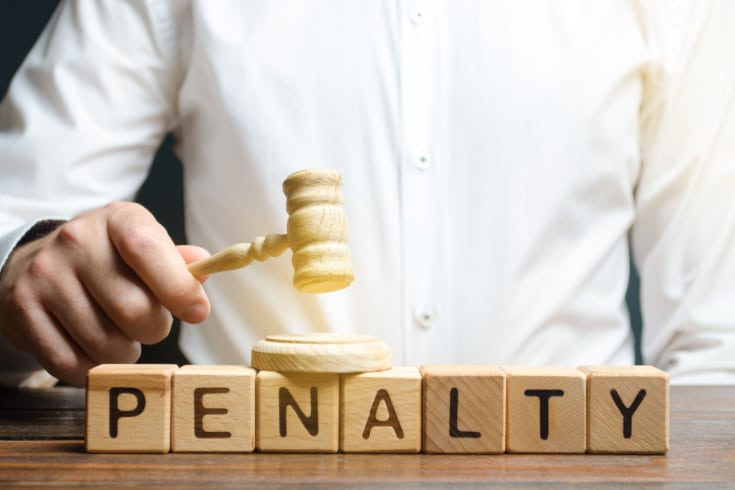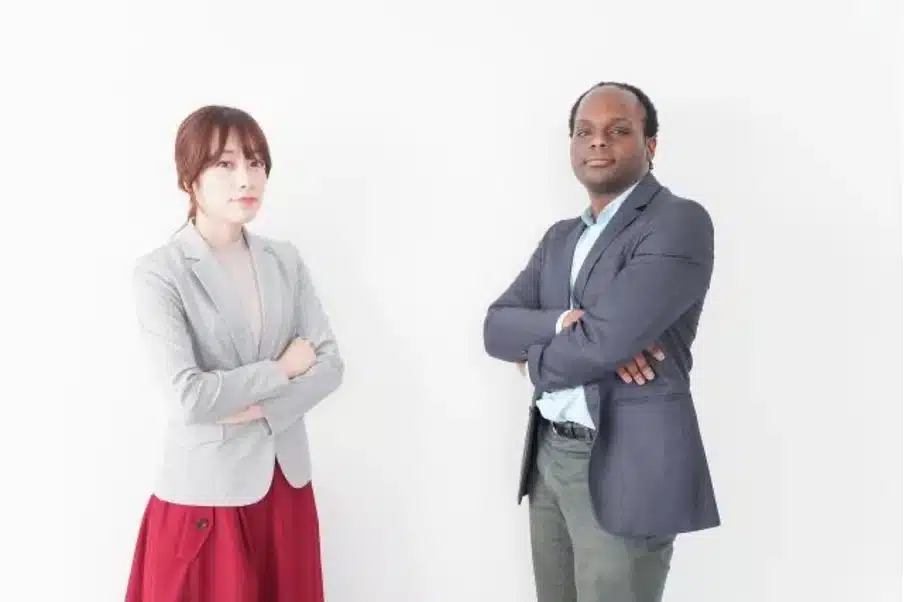Recognition of Authors under Japanese Copyright Law: Principles and Business Exceptions

In the realm of Japanese copyright law, determining “who is the author” is an extremely important issue that serves as the starting point for all rights-related matters. Unlike patent or trademark rights, copyright arises automatically at the moment of creation without the need for any registration procedures. This principle, known as “formalism-free,” swiftly protects the rights of creators but also carries the risk of unclear rights attribution, especially in corporate activities. As a general rule, the natural person who created the work is considered the author. However, in the business world, there are situations where multiple individuals collaborate on a creation, employees produce works as part of their duties, or large-scale projects like films involve numerous specialists. To address these complex scenarios, Japanese copyright law provides several important exceptions and special rules that complement the basic principle. Understanding and properly managing these rules is essential for companies to securely protect their intellectual property and prevent future disputes. This article will first review the basic principles of authorship recognition and then provide an expert analysis of the exceptions that are particularly important in corporate legal affairs, such as joint authorship, works made for hire, and film works, incorporating specific statutes and case law.
The Principle: Who is the Author?
Under Japanese copyright law, the fundamental definition of an author is “the person who creates the work,” as stipulated in Article 2, Paragraph 1, Item 2 of the Japanese Copyright Act. This is an unwavering principle. The term “the person who creates” refers to a natural person who has engaged in specific expressive activities. Therefore, under this principle, individuals who merely provide funding, suggest creative ideas, or give general instructions as managers do not qualify as authors. Copyright protection is exclusively for the creative “expression” itself, and the person who has materialized that expression with their own hands is recognized as the author.
What makes this principle even more significant is the “formality-free principle” adopted by Japanese copyright law. Article 17, Paragraph 2 of the Japanese Copyright Act states that the rights of the author commence “at the time of creation of the work,” and do not require any registration with administrative agencies or specific markings for the rights to arise. These two principles combined mean that, as a legal consequence, copyright automatically vests in the creator the moment a work is created.
This system can pose significant risks from a business perspective. Consider, for example, a company that commissions an external freelance designer to create a logo. The moment the designer completes the design, according to the principles of Japanese copyright law, the copyright of that logo automatically belongs to the designer. Even though the company has paid for it, they will not become the copyright holder of the logo unless a separate contract for the transfer of copyright is concluded. The risk of rights attribution does not arise at the stage of registration procedures but at the very moment of creation. Therefore, for a company to ensure the security of intellectual property rights, it is essential to clarify the rights relationship through contracts before the creation begins, rather than relying on post-facto responses, making proactive risk management indispensable.
When Multiple Creators Are Involved: Joint Authors Under Japanese Copyright Law
In business projects, it is common for multiple experts to collaborate to create a single deliverable. An issue that arises in such cases is the handling of “joint works.” Japanese copyright law defines a joint work as “a work created jointly by two or more persons, which cannot be separately utilized because the contributions of each person cannot be separated.” This definition includes two important elements. First, there must be an intention among the multiple creators to jointly create a single work, and second, it must be impossible to physically or conceptually separate and independently use the contributions of each person in the completed work.
This is distinctly different from “composite works,” where the contributions of each person can be separated. For example, if multiple authors each write different chapters to complete a book, each chapter can be used separately as an independent work, making it a composite work. In this case, each author holds copyright individually for the chapter they wrote. On the other hand, if two screenwriters collaborate to write a single script, it is impossible to extract the contribution of just one, making it a joint work.
Regarding the exercise of rights in a joint work, Japanese copyright law sets very strict rules. The rights held by an author are broadly divided into “moral rights,” which protect personal interests, and “copyright (property rights),” which protect financial interests. In the case of a joint work, the consent of all joint authors is required for the exercise of both types of rights. Specifically, Article 64, Paragraph 1 of the Japanese Copyright Law requires the consent of all for the exercise of moral rights, and Article 65, Paragraph 2 requires the consent of all for the exercise of copyright (property rights).
The principle of “consent of all” applies not only to licensing to third parties but also when one of the co-owners wishes to use the work independently. Furthermore, Article 65, Paragraph 1 of the Japanese Copyright Law stipulates that the consent of all co-owners is required when transferring their share to another person or establishing a security interest.
This unanimity principle, while intended to protect each joint author, can lead to a serious business risk known as “copyright deadlock,” where if even one joint author opposes, all commercial use of the work, such as licensing, selling, or modifying, becomes impossible, and valuable intellectual property is completely frozen. To avoid such situations, Japanese copyright law prohibits “acting against good faith” to prevent the establishment of consent for moral rights (Article 64, Paragraph 2) and prohibits refusing consent “without just cause” for copyright (property rights) (Article 65, Paragraph 3). However, determining what constitutes “acting against good faith” or “without just cause” ultimately relies on litigation, which is time-consuming and costly, making it impractical as a business solution.
Therefore, when initiating a joint creative project, it is best and only to avoid the risk of deadlock by entering into a contract among the joint authors in advance, detailing the method of exercising rights, distribution of revenue, designation of a representative to exercise rights, and resolution mechanisms in case of conflicting opinions.
| Feature | Joint Work | Composite Work |
| Creation Process | There is a joint intention to create a unified work, and the creative activities are carried out integrally. | Each author independently creates a work, which is later combined. |
| Separability of Contributions | It is impossible to separate each person’s contribution for independent use. | It is possible to separate each person’s contribution for independent use. |
| Exercise of Rights | As a general rule, the consent of all authors is required for the use of the entire work. | Each author can exercise rights independently for the part they created. |
| Concrete Example | A script co-written by several people. | An anthology of essays by different authors. |
Identifying the Author in Practice: Presumption of Authorship
When significant time has passed since the creation of a work or when numerous parties are involved, proving who the true author is can be challenging. To alleviate such practical difficulties, Japanese copyright law has provisions for the “presumption of authorship.” Article 14 of the Japanese Copyright Law states that “if a person’s name or designation, known to the public as the author’s name, is displayed in the usual manner on the original work or when the work is made available or presented to the public, such person shall be presumed to be the author of the work.”
This provision merely establishes a legal “presumption,” which can be overturned by contrary evidence. In other words, the person whose name is displayed on the work is initially regarded as the author, but if it can be proven that this display is factually incorrect, the presumption can be reversed. An important case that clarified the legal nature and limitations of this presumption rule is known as the “Selected Copyright Cases” decision by the Intellectual Property High Court of Japan.
In this case, a scholar whose name was displayed as the “editor” in a series of legal textbooks claimed to be the author of the books. It was clear that the presumption of authorship under Article 14 of the Japanese Copyright Law applied since the scholar’s name was displayed as the editor. However, the court examined in detail the scholar’s actual involvement in the project. As a result, the court found that the scholar’s contribution was limited to providing advice and opinions, and he did not actively participate in the core creative activities of an edited work, such as selecting and arranging the cases to be published. In essence, his role was merely that of an advisor, and he did not make a creative contribution, leading the court to overturn the presumption of authorship.
This case underscores that in determining authorship, the substance of actual creative contribution is emphasized over formal titles or displays. For companies, this provides two important implications. Firstly, individuals displayed as authors on internal documents, reports, or other outputs must be those who have actually made a creative contribution, not merely project leaders or titleholders. Casual attribution of authorship can result in legally ineffective presumptions. Secondly, if an individual mistakenly displayed as the author claims rights, and it can be proven that the individual did not make a substantial creative contribution, there is a possibility to contest such claims. In managing corporate intellectual property, it is crucial to base credit policies on actual creative contributions rather than positions or hierarchy to ensure legal stability.
Key Exception #1: Works Created Within a Corporation
In the course of corporate activities, obtaining permission from the employees who created reports, blueprints, software, designs, and other works every time would significantly hinder the smooth execution of business. To solve this issue, Japanese copyright law provides for the system of “works made for hire” as the most important exception to the principle of authorship recognition. This provision, set forth in Article 15 of the Japanese Copyright Law, allows, under certain conditions, the employer or corporation, rather than the individual employee who created the work, to be recognized as the original author.
For a work to qualify as a work made for hire under Japanese Copyright Law, all of the following requirements set out in Article 15, Paragraph 1 must be met:
- It must be created based on the initiative of the corporation or equivalent entity.
- It must be created by a person engaged in the business of that corporation or equivalent entity.
- It must be created as part of the person’s job duties.
- It must be published under the name of the corporation or equivalent entity.
- There must be no special provisions in the contract, work rules, or otherwise at the time of creation.
However, considering the reality that computer programs are often developed for internal use and not published externally, Article 15, Paragraph 2 of the Japanese Copyright Law exempts them from the fourth requirement above, which is “publication under the corporation’s name.”
| Requirement | General Works (Reports, Designs, etc.) | Computer Programs |
| 1. Corporation’s Initiative | Required | Required |
| 2. Created by Someone Engaged in Business | Required | Required |
| 3. Created as Part of Job Duties | Required | Required |
| 4. Published Under Corporation’s Name | Required | Not Required |
| 5. No Special Provisions at Time of Creation | Required | Required |
The most contentious and frequently litigated requirement is the scope of “a person engaged in the business of the corporation or equivalent entity.” It is clear that full-time employees are included, but the treatment of works created by part-time employees, temporary staff, or freelancers under contract for services, who do not have a formal employment relationship, is problematic.
A leading case on this point is the decision of the Supreme Court of Japan in the “RGB Adventure Case” on April 11, 2003 (Heisei 15). In this case, a Chinese designer on a tourist visa created personality designs for a Japanese animation production company. There was no formal employment contract between the designer and the company. The Supreme Court set forth a standard of judgment that emphasizes the substantive relationship over the existence of a formal contractual relationship. Specifically, it stated that the determination should consider whether there is a reality of providing labor under the direction and supervision of the corporation and whether the money paid can be evaluated as compensation for that labor provision. In this case, the designer was found to have a substantive supervisory relationship because he worked according to the company’s instructions and received a fixed monthly salary, and the creation of the work made for hire was affirmed.
This Supreme Court decision has become the standard for subsequent case law. For example, in the “Photographer Case” (Intellectual Property High Court, December 24, 2009), it was denied that the professional photographer’s work constituted a work made for hire because, although he exercised a high degree of professional discretion in his photography and received comprehensive instructions from the company, he was not under the actual direction and supervision of the company. On the other hand, in the “Valhalla Gate of the Divine Prison Case” (Intellectual Property High Court, February 25, 2016), a game developer without an employment contract was found to have a substantive supervisory relationship because he was managed by a time card and used the company’s facilities for work, and the creation of the work made for hire was affirmed.
The important conclusion drawn from these cases is that the “actual operation of business” itself, how a company collaborates with freelancers or external contractors on a daily basis, has legal significance in determining the ownership of intellectual property. Even if the contract states “contract for services,” if the reality is that the company strictly manages work hours and locations, provides detailed instructions on how to proceed with work, and pays compensation on an hourly basis, the court may consider this a substantive supervisory relationship and determine that the copyright of the work product belongs to the company as a work made for hire. Therefore, companies need to strategically align contract content with actual business management methods to manage the risk of unintended rights attribution.
Key Exception #2: Cinematic Works Under Japanese Copyright Law
Film is a comprehensive art form that comes to fruition through the creative contributions of a vast array of professionals, including directors, screenwriters, cinematographers, production designers, actors, and musicians. If all these contributors were to share copyright (property rights) as joint authors, the risk of a ‘copyright deadlock’ would be greatly magnified, making commercial exploitation such as distribution and licensing of the film virtually impossible. To avoid such a situation and to promote the healthy development of the film industry, which requires substantial investment, Japanese copyright law has established unique rules for cinematic works.
Firstly, Article 16 of the Japanese Copyright Law defines the ‘author’ of a cinematic work as “the person who has creatively contributed to the overall formation of the film by being in charge of production, direction, cinematography, art, etc.” This includes film directors and cinematographers. These individuals retain inalienable ‘moral rights of an author’ (such as the right to be credited and the right to protect the integrity of the work).
However, when it comes to the attribution of ‘copyright’ as a property right, Article 29 of the Japanese Copyright Law provides a decisive special case. This article stipulates that the copyright of a cinematic work originally belongs not to its author (such as the director) but to “the person who has the initiative and responsibility for the production of the cinematic work,” namely, the ‘film producer.’ Generally, this refers to film companies or production committees that raise funds and bear the ultimate responsibility for the film.
This mechanism is the result of a clear industrial policy consideration embedded in Japanese copyright law. By centralizing the property rights necessary for commercial exploitation with the film producer, who bears the business risks, it eliminates the complexity of rights management and enables smooth fundraising and global distribution. As a result, investors can invest in film projects without being troubled by uncertainties in rights relationships. While leaving moral rights with individual creators, concentrating property rights with the producer is a highly rational legal solution that balances the honor of creators with the development of the film business as an industry.
Supplementary Information on Computer-Generated Works
In recent years, the copyright treatment of content generated by computers has become a global discussion due to the advancement of artificial intelligence (AI) technology. While there is no direct provision in Japanese copyright law regarding this issue, a consistent approach has been indicated through years of deliberation, including a report published by the Copyright Council of the Agency for Cultural Affairs in Japan in 1993.
This fundamental approach is known as the “tool theory.” It positions computers and AI systems as sophisticated “tools” used by humans to engage in creative activities. According to this theory, even if a work is generated by a computer, as long as a human has creative intent during the creation process and expresses thoughts or emotions creatively through specific instructions (such as inputting prompts, selecting data, setting parameters, and selecting or modifying the generated results), that human is recognized as the author.
No matter how advanced AI technology becomes, under the current interpretation of Japanese law, AI itself cannot become an author. The legal issue is not whether “AI can become an author” but “which human actions in the creation of AI-generated works are evaluated as creative contributions to a copyrighted work.” This consistent approach of “tool theory” ensures a certain level of legal predictability amidst rapidly changing technology. For companies utilizing AI to generate content, it is crucial to document and be able to prove the process of human creative involvement, such as designing prompts and selecting or editing the generated results, in order to secure copyright.
Summary
The identification of the author under Japanese Copyright Law starts with the straightforward principle that “the person who creates the work is the author.” However, within the context of corporate activities, this principle alone cannot address the various forms of creation that exist. Important exceptions such as joint authorship involving multiple parties, works created by employees in the course of their duties, and the works of films are established to adjust the attribution of rights to fit the realities of business. Proceeding with business activities without a proper understanding of these rules can lead to significant risks, such as unintentionally losing vital intellectual property rights or becoming entangled in unexpected rights disputes. To ensure the attribution of intellectual property rights and stabilize business operations, it is essential to establish clear and detailed contracts with all parties involved in creative activities beforehand and to organize the rights relationships.
Our firm, Monolith Law Office, has a wealth of experience in providing specialized legal services to a wide range of domestic and international clients on complex issues related to Japanese Copyright Law. Our office boasts several experts who are fluent in English and hold both Japanese attorney qualifications and foreign legal qualifications, enabling us to accurately address copyright issues in the context of international business. If you have any specific inquiries regarding the identification of authors, the creation of contracts, the establishment of rights management systems, or support for your company’s intellectual property strategy, please do not hesitate to contact us.
Category: General Corporate





















